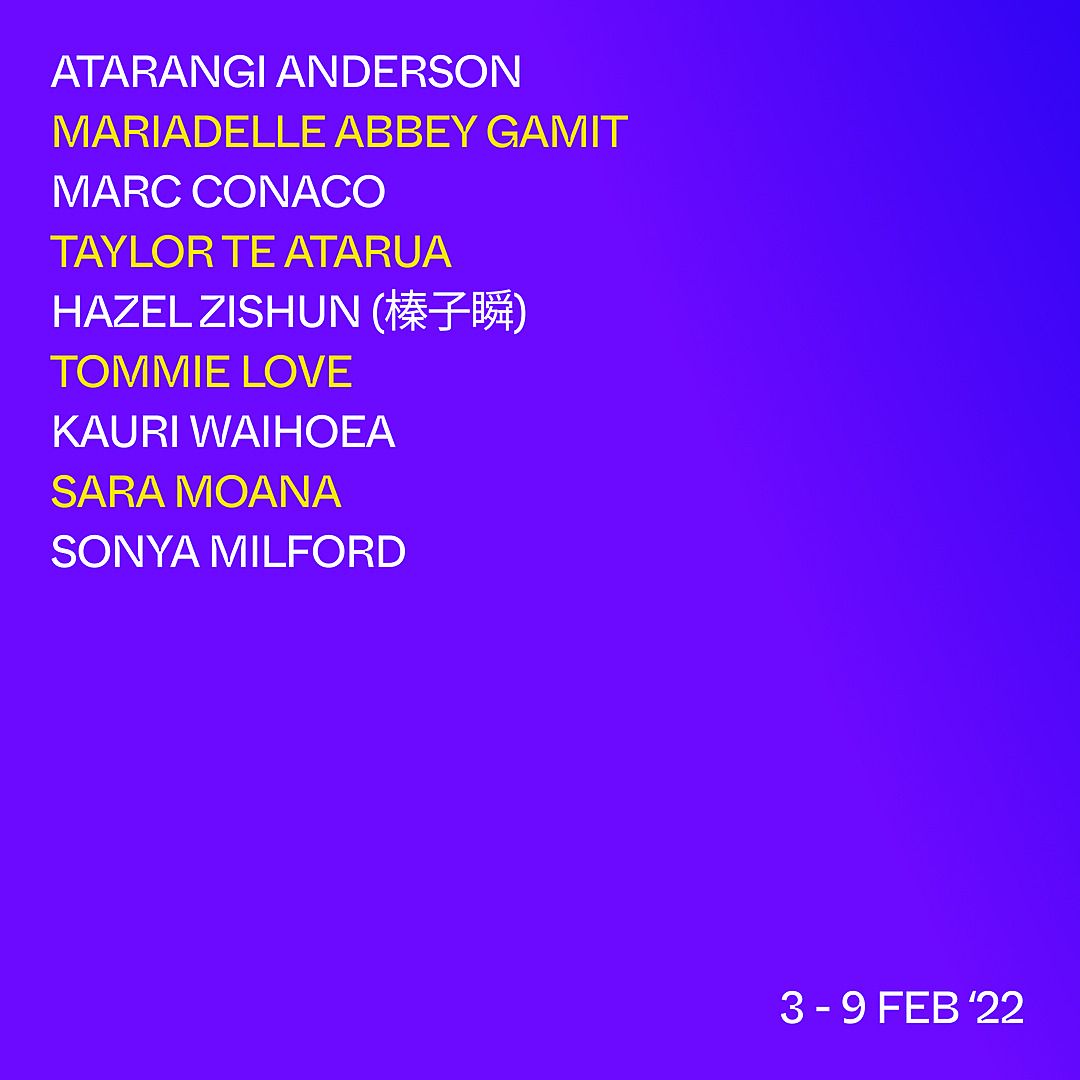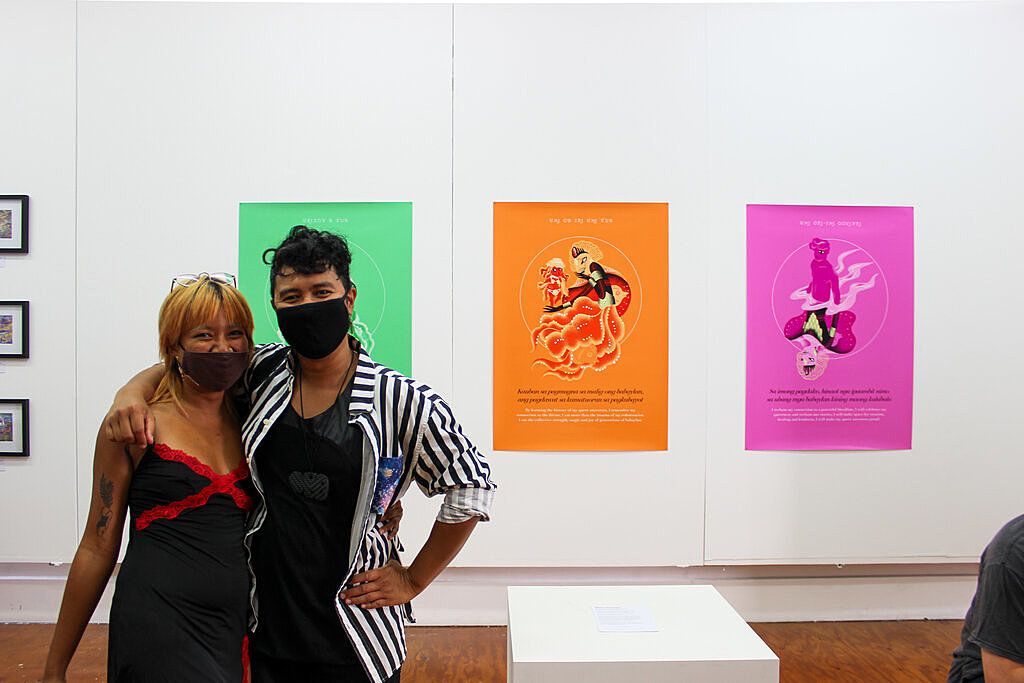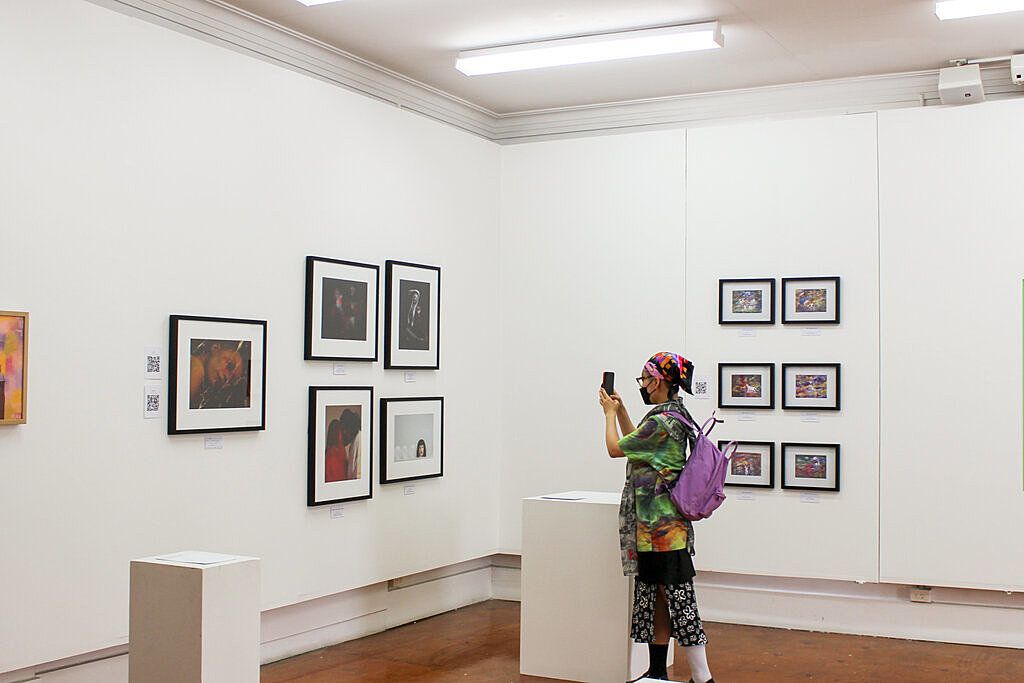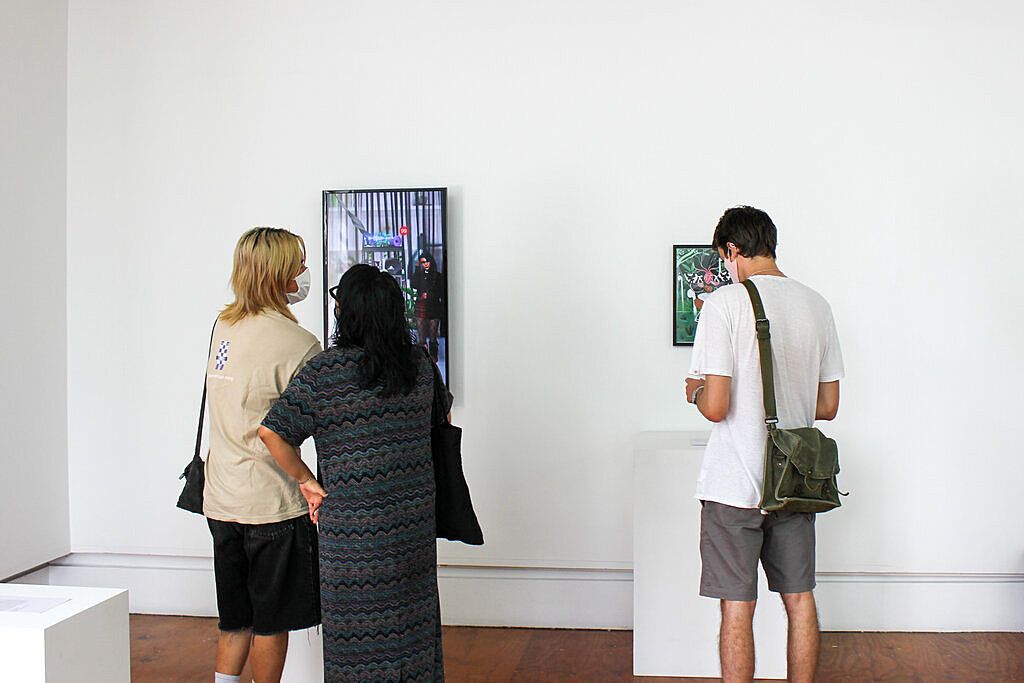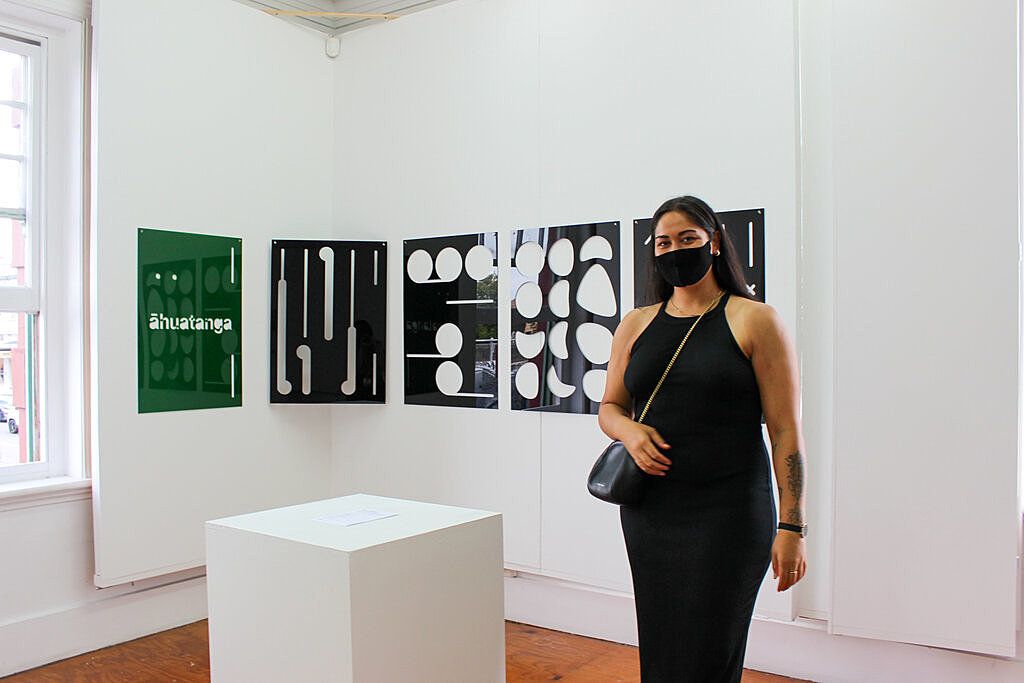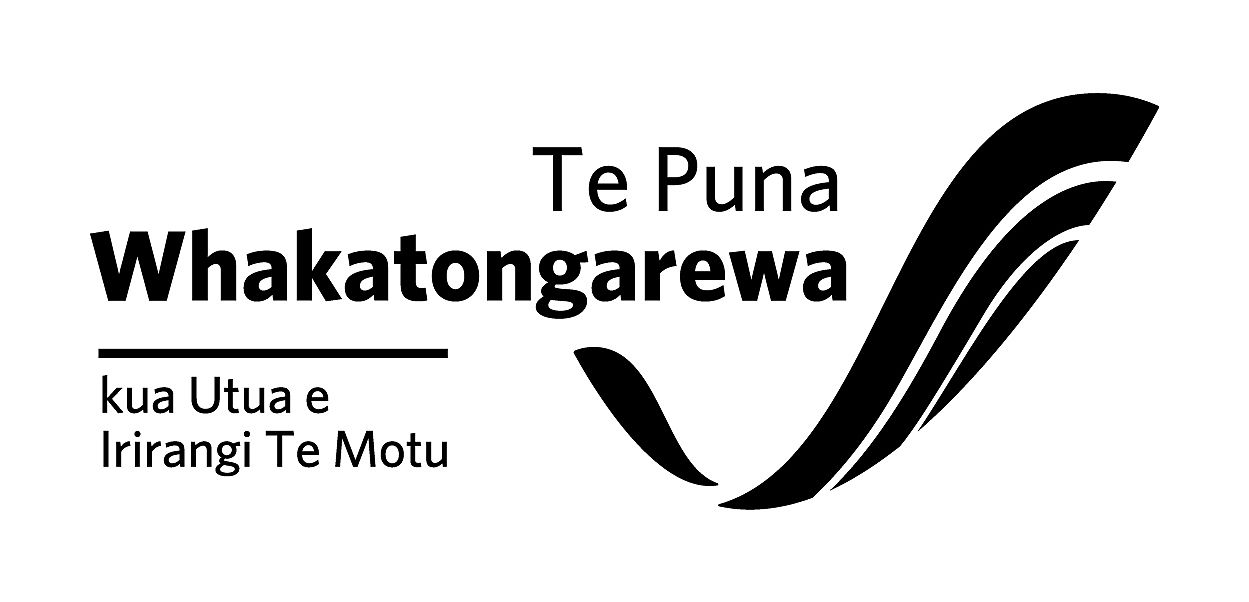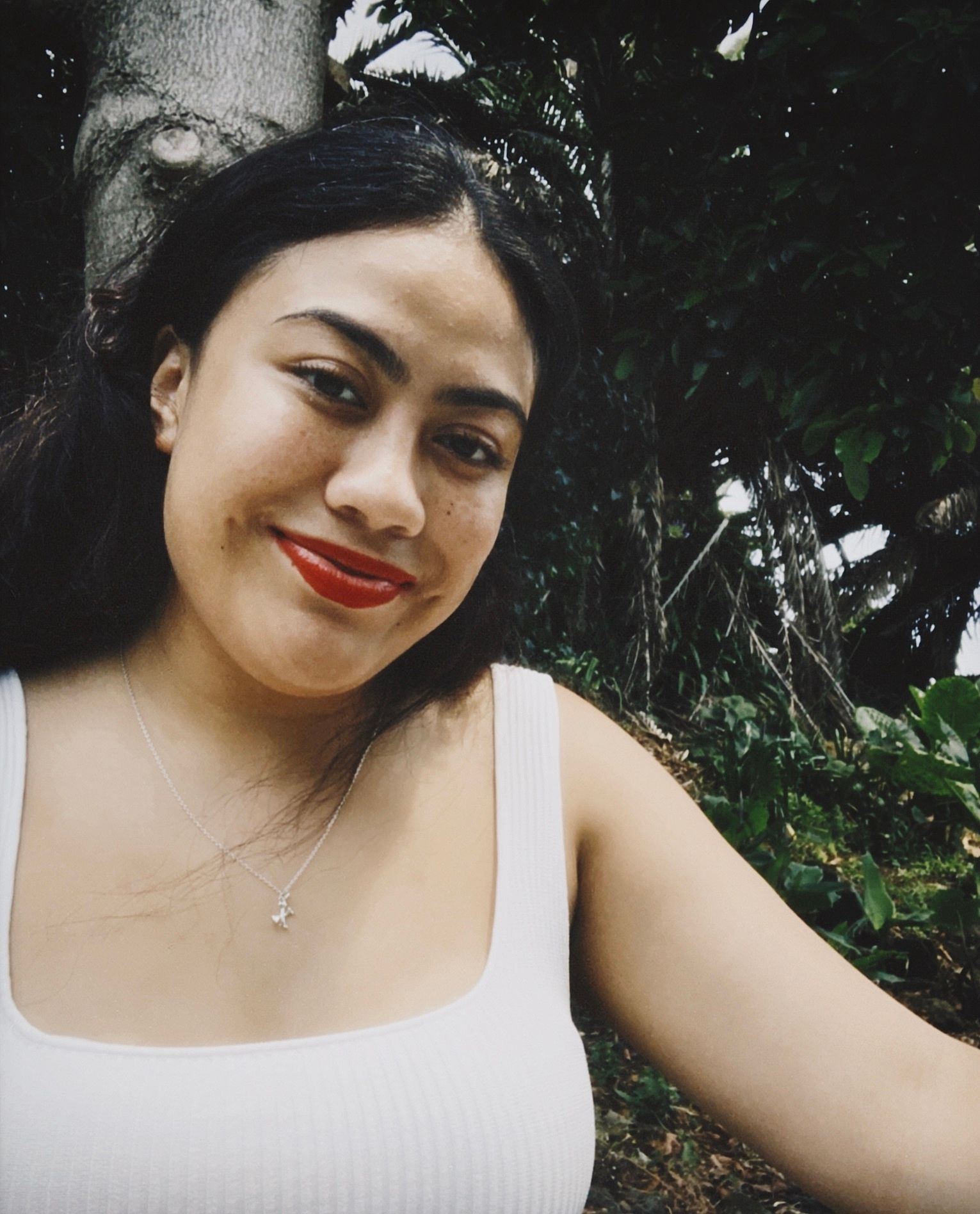You Need to See Āhua Today
Queer makers Āhua Collective welcome Pride month with their hopeful second exhibition. Taualofa Totua shares her thoughts.
Āhua's latest exhibition is divine.
Currently combing through kupu that feel better suited to the group – who don’t entirely create as a “collective”, but rather exist: harmonious and truthfully. Their second exhibition: An evolution of identity – Navigating our space, sits upstairs at Ponsonby’s Studio One Toi Tū. The room is tucked away like a secret of safety, showing art that empowers existence for Tāmaki queer communities as we welcome the month of Pride. Here until the end of today (nooo!!!! but we need more time tho) the exhibition features nine of the group’s expert creators and thinkers, each unique and linked by a powerful aspect of their identity.
*
“We aim to decolonise ideas of creativity, gender, sexuality and culture through representation of our own Āhuatanga (how we present ourselves) and the futures we want for our queer whānau.”
– Āhua Collective
I had the privilege of having a cool and carefree talanoa with the group’s editor 章雪莉 Sherry Zhang and Sonya Milford, founder and design director of the Āhua creative team. I wandered around the space many times. And each time revealed another layer, another story and another lens of being unapologetically queer. The significance of being sovereign over one’s identity each time. I breathed in fresh ideas as Marc Conaco shared a reimagined and sacred need for his queer ancestors, the babaylan: ritual leaders, healers, storytellers and culture bearers. I stared in awe at Tommie Love’s captured moments of queer African diaspora in Hope At Night; I allowed myself to feel giddy at finally seeing Sara Moana’s work in the flesh. All the while, my thoughts of queer joy and its origins were evolving. My steps formed a web, one that I know will need pages of journaling to untangle – now possible thanks to a socially distanced-ass shaking at home-beat thumping over zoom-cancelled irl-pride.
When I think of Āhua and its presence as we enter another tentative year of event planning, I can’t help but breathe a sigh of relief. Pride may have been cancelled but this team somehow made this exhibition happen. The health of our queer community and the ability to exist freely is growing and Āhua is proof of that. Co-existing and creating independently, I want to applaud them, as I wait to read six more issues from their first cohort. All the thinkers behind this year’s cohort have names that have circled my IG feed on numerous occasions (for their work beyond Āhua mostly), but there were three artists whose work I walked away grateful to have encountered for the first time: Marc Conaco, Hazel Zishun and Mariadelle Abbey Gamit. I asked them some questions below. To see more about what they so willingly shared with me, you need to see Āhua today.
Marc Conaco
Marc Conaco, Ang bayot naka-hinumdum. Ang bayot nimata, 2022, Studio Toi Tū
"As I honour my queer ancestors, I grow in the understanding of what it means to be queer."
Tell us about your work in this exhibition.
The title of the work is:
Ang bayot naka-hinumdum. Ang bayot nimata.
(As we remember, so we awaken)
The work is a triptych: an invocation to reclaim and tap into queer ancestral power.
To awaken ancient knowledge as ritual leaders, healers, storytellers and culture bearers.
These illustrated works first appeared in SYOKES, an Objectspace exhibition 2020-2021.
It features a re-imagined queer childhood where our queer ancestors, the babaylan, weren't demonised and erased by colonisation and white supremacy: Instead of shame and sadness at the realisation that one was queer, there is elation and excitement at the prospect of accessing the powers of a powerful bloodline. The babaylan were ritual leaders, healers, storytellers and culture bearers – integral to our pre-colonial communities.
The child's awareness of being queer awakens their diwata – a gift from the divine. The diwata protects and creates a safe space for the child to explore their queerness and grow into a powerful babaylan.
What does it mean for you to celebrate pride alongside Āhua Collective this year?
Āhua Collective shows us that we can be as weird, as artsy, as niche, as political, as indigenous, as anything and everything, and that there will always be a safe space for all our identities to be seen and be heard. It's an empowering and beautiful feeling to be with these talented folk.
How does the possibility of evolving identities give you hope as a queer person and artist?
As a queer kid growing up under the shadow of white supremacy in post-colonial Philippines: I was made to think that the limiting western lens of queerness as ‘LGBT’ were the only identities available to me. As I went on my journey of decolonisation, I read up on entire indigenous queer histories that were violently erased by colonisation. One of these were my queer ancestors, the babaylan: ritual leaders, healers, storytellers and culture bearers. They were integral to pre-colonial communities.
As I honour my queer ancestors, I grow in the understanding of what it means to be queer:
By knowing our histories we reclaim our identities.
By remembering who we are, we reclaim our power.
Hazel Zishun
Hazel Zishun, 回家come home and 如梦初醒Now you see me, 2022, Studio Toi Tū
"I think celebrating pride for me personally, is just being, living, and staying true."
Tell us about your work in this exhibition.
For this exhibition, I’m showing two collections: 回家come home and 如梦初醒Now you see me. Now you see me, is a photography series I created in collaboration with photographer Karen Ishiguro, and made possible with the help of my wonderful creative team. Together we explored stories inspired by my experiences as an immigrant teenager growing up in Aotearoa, trying to navigate a time and space with limited self-representations in media and the arts while simultaneously digesting social conditionings around topics like race, gender, sexualities and their meanings.
Coming home celebrates my realisation that ‘home’ is not a physical location. This ‘home’ I’ve been longing for is in fact, a sense of belonging. When we come home to ourselves, we are truly home, and never lonely even when we are alone.
What does it mean for you to celebrate pride alongside Āhua Collective this year?
It’s been a beautiful journey to be a part of Āhua. I love our energy, our differences and our inspirations and identities. I’m glad to have met all the artists from the collective, and it’s heartwarming to see everyone’s growth and evolution as we continue to live through such a transformative moment in time and space. I think celebrating pride for me personally, is just being, living, and staying true. And being a part of Āhua allows us all to just BE, which feels so relaxing and whole.
How does the possibility of evolving identities give you hope as a queer person and artist?
We are constantly evolving, changing and transforming. Much like the flow of water and air. How does the possibility of evolving identities give me hope as an artist and person? Maybe when we look within ourselves we can truly accept who we are, flaws and all, and accept others for who they are, flaws and all. This gives me hope because as we all evolve and find our way back to our most true and authentic selves, we radiate this immaculate energy and can honour the connectedness of all occupying this time and space.
Mariadelle Abbey Gamit
T̶h̶e̶ ̶A̶m̶Bassa̶d̶o̶r̶s̶Boosted, Mariadelle Abbey Gamit, 2022, Studio Toi Tū
"The fact that we queer POCs keep evolving is a testament to our ability to be tenacious and fluid at the same time."
Tell us about your work in this exhibition.
This work is a portrait of the relationship between myself and the digital space particularly during the lockdown period(s). It is much like being cooped up with a friend at your flat, where you gradually get to know more about each other, learn to navigate each other's spaces and establish boundaries. A healthy relationship is necessary to move forward in life together.
What does it mean for you to celebrate pride alongside Āhua Collective this year?
Jean De Dinteville [the figure on the left side of the painting that the work was based on] reportedly had the painting hidden away at his estate thus making the viewing of the work more intimate. I view my work similarly as well – feeling comfortable with sharing something which is quite emotionally vulnerable with my collective. I usually treat my practice as a way to process emotions like loss, grief, anxiety and hopelessness. Āhua Collective is definitely a safe space for me to be able to share this pandemic catharsis. So even though heaps of Pride events got cancelled, I'm grateful to be able to celebrate it in this way – showcasing vulnerability around the right people.
How does the possibility of evolving identities give you hope as a queer person and artist?
The fact that we queer POCs keep evolving is a testament to our ability to be tenacious and fluid at the same time. We have always been this way I suppose. Celebrating this will hopefully encourage others to find hope and resilience in change and adversity. In turn, I hope these artistic expressions inspire more proactive movements (within and outside our community) for the better.
Sonya Milford, Paradise For Who, 2022
*
Taualofa Totua is a cadet in the Next Page cadetship programme, public interest journalism funded through NZ On Air.

